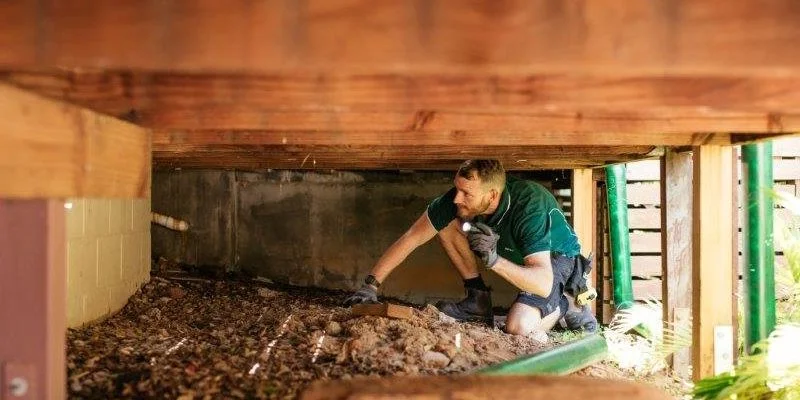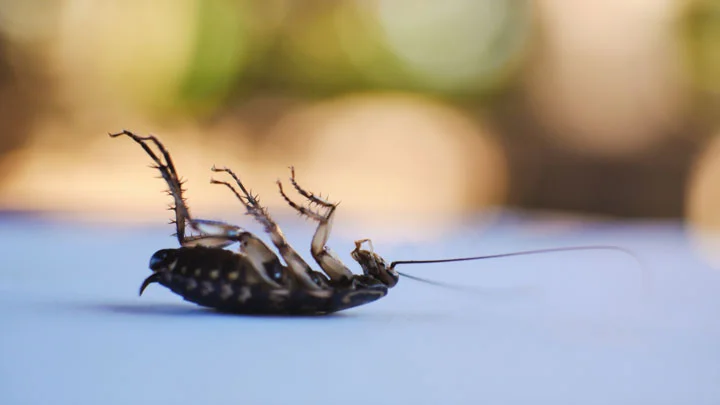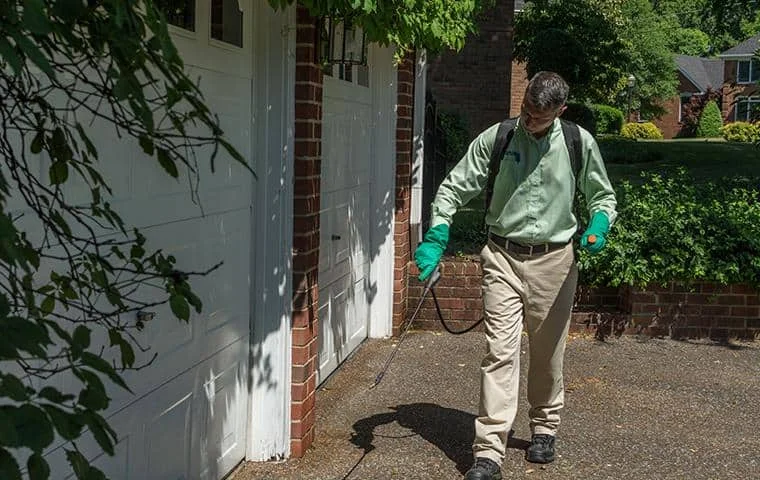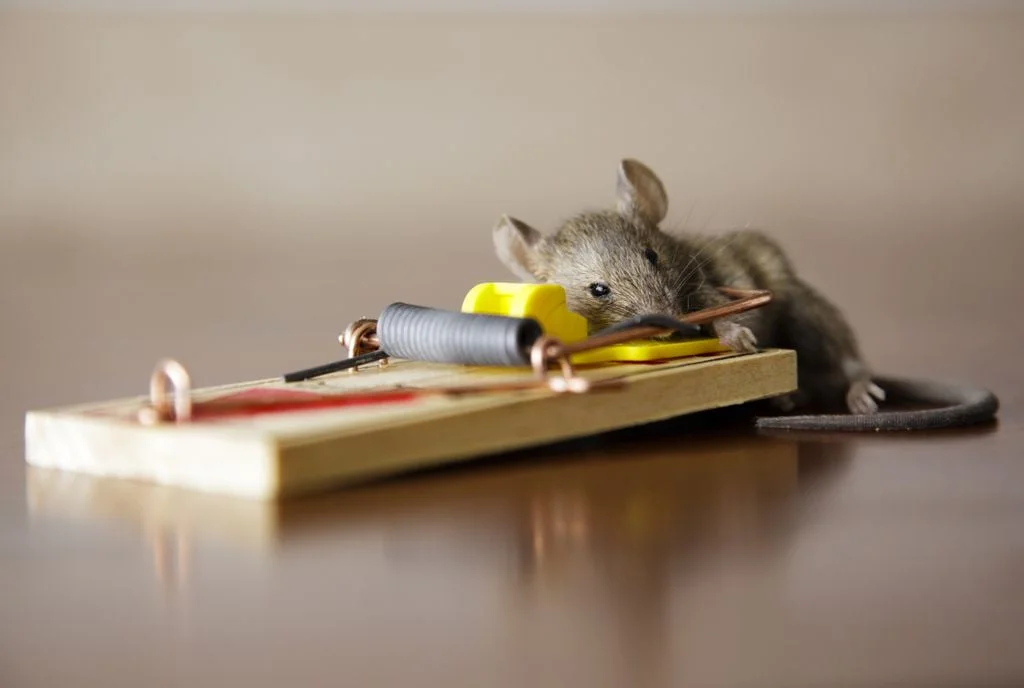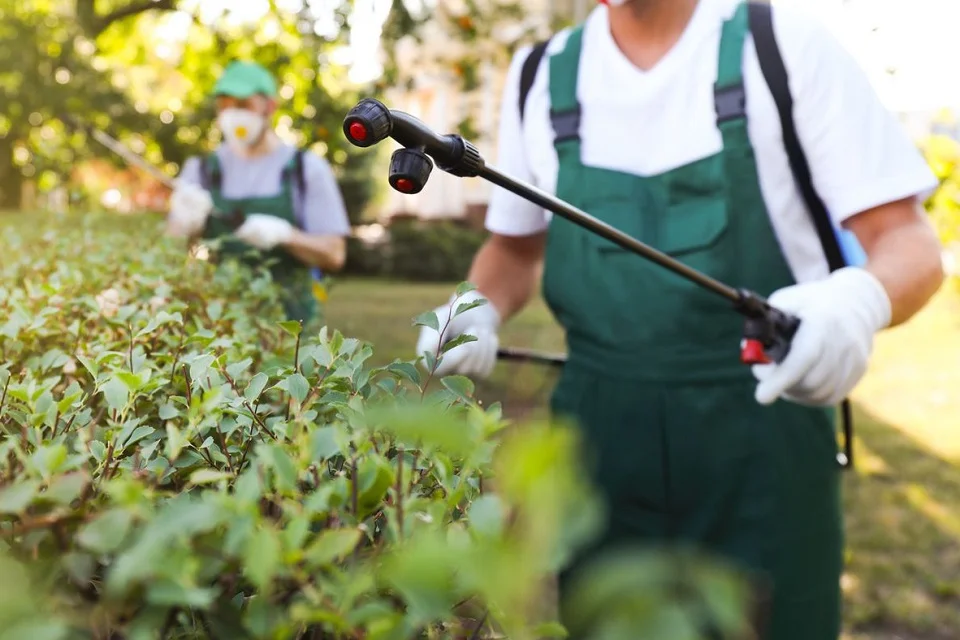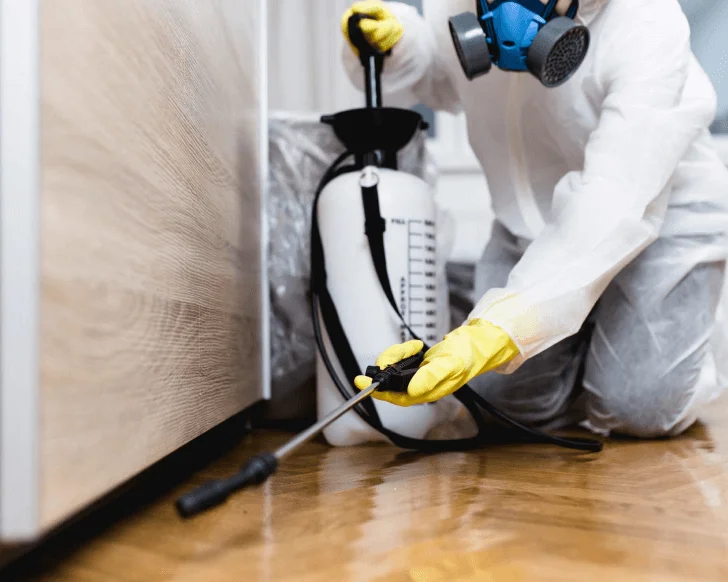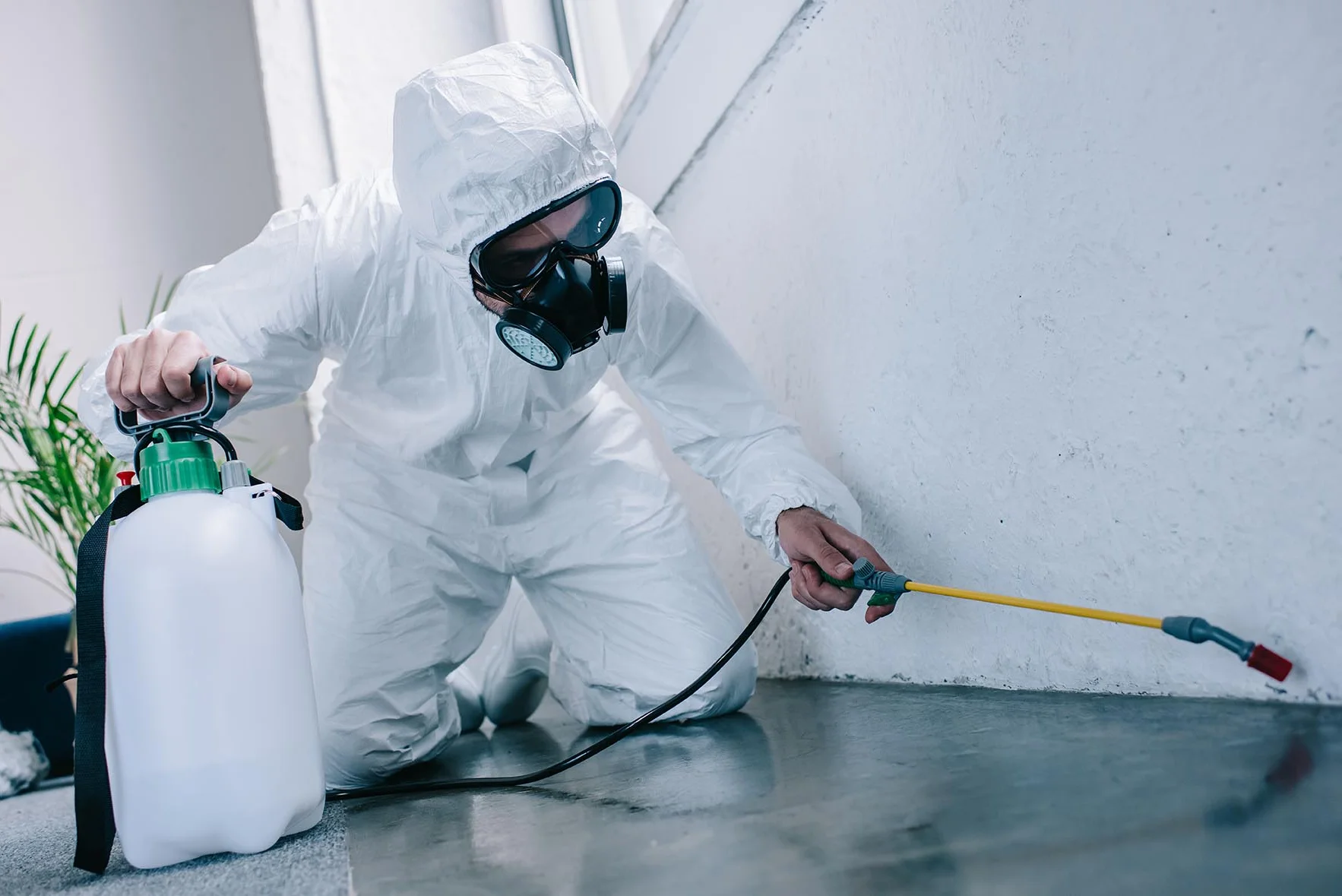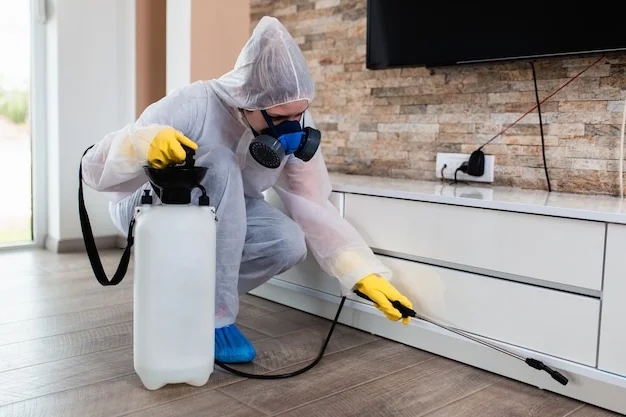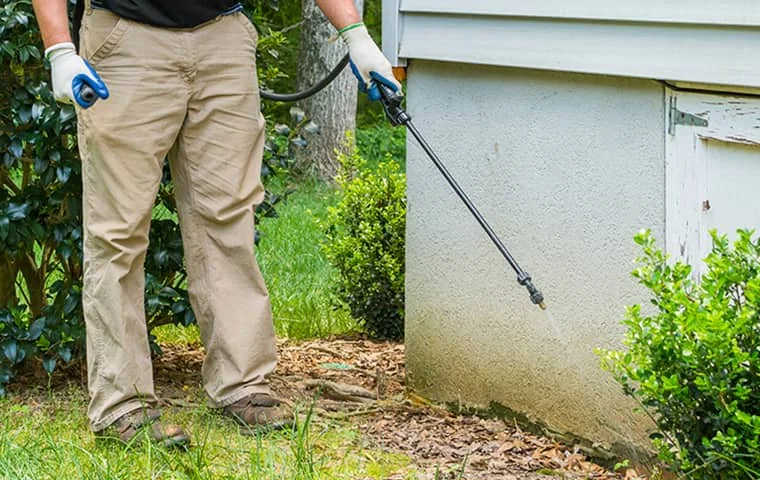Across the Hawaiian archipelago's diverse islands, from the rainforests of Kauai to the volcanic landscapes of the Big Island, Hawaii's tropical paradise creates ideal conditions for a remarkable variety of persistent pests. The Aloha State's warm temperatures, year-round growing seasons, high humidity, and isolated evolution have produced endemic pest species while also becoming home to numerous introduced invaders. Effective pest control in Hawaii requires specialized knowledge of the islands' unique ecosystems, microclimates, and the distinctive construction methods adapted to tropical conditions.
Properties throughout Hawaii face continuous pest pressure that can damage structures, compromise health, disrupt the visitor experience, and threaten native ecosystems. Whether dealing with aggressive termite species in Honolulu, cockroach infestations in Maui condominiums, or rodent issues in Kona coffee farms, local professional exterminators provide essential expertise tailored to Hawaii's specific regional challenges. This guide explores common Hawaiian pests, effective control strategies including eco-friendly pest solutions, and why the state's unique island ecology and climate make professional knowledge particularly valuable for lasting protection.
Dealing with persistent Hawaiian pests? Our island specialists offer
emergency pest control
24/7 and comprehensive
termite & ant protection throughout the islands.
Contact us today for prompt assistance!
Pest Control Challenges Specific to Hawaii
Hawaii's unique environment creates distinctive pest control challenges that require specialized approaches. Here's why pest management in the Aloha State demands expert attention:
-
Year-round tropical climate Hawaii's consistently warm temperatures and high humidity create ideal breeding conditions for pests without seasonal dormancy periods, allowing continuous reproduction cycles and population growth throughout the year.
-
Island isolation and invasive species Hawaii's geographic isolation has made it particularly vulnerable to invasive pests that arrive without natural predators, often becoming more problematic than in their native ranges and threatening both structures and native ecosystems.
-
Diverse microclimates Despite its small land area, Hawaii encompasses remarkable climate diversity—from dry leeward areas to wet windward zones, coastal regions to high elevations—creating varied pest pressures across short distances and requiring highly localized treatment approaches.
-
Tropical construction methods Hawaii's buildings incorporate distinctive architectural elements adapted to the tropical climate, including open floor plans, indoor-outdoor living spaces, and specialized materials that create unique pest entry points and harborage areas.
-
Environmental sensitivity The islands' precious and often endangered native ecosystems demand careful consideration in pest management approaches, requiring specialized knowledge of protected species, watershed areas, and marine environments that could be impacted by treatment methods.
Understanding these Hawaii-specific challenges is crucial for effective pest management. Professional pest control services develop customized treatment plans that address these factors, providing targeted protection for the islands' distinctive environmental and structural conditions.
Common Pests in Hawaii
Hawaii's tropical climate supports an extraordinary diversity of pests that impact homes, businesses, and agricultural areas throughout the islands. Here are the most common invaders that plague the Aloha State:
Termites
Professional termite inspection being conducted at a Hawaiian property
Hawaii faces some of the nation's most aggressive termite pressure, with multiple species threatening structures throughout the islands. Formosan subterranean termites, West Indian drywood termites, and Pacific dampwood termites all thrive in Hawaii's tropical climate. Unlike mainland states where termite activity may slow during winter months, Hawaii's year-round warmth allows continuous termite feeding and colony growth, dramatically accelerating potential damage.
Professional termite control in Hawaii often requires multi-faceted approaches combining soil treatments, baiting systems, and localized wood treatments depending on the specific termite species involved. Annual termite inspections are especially crucial for Hawaiian properties, as colony development proceeds rapidly in the tropical environment. For Hawaii's many wooden structures, comprehensive termite protection programs provide essential safeguards against these relentless destroyers that cause millions in property damage across the islands each year.
Cockroaches
Professional cockroach treatment being applied in a Hawaiian kitchen
Hawaii's warm, humid environment creates ideal conditions for multiple cockroach species including American, German, brown-banded, and Australian cockroaches. These resilient insects thrive both indoors and outdoors throughout the islands, with the tropical climate supporting year-round activity and rapid reproduction cycles. Hawaii's dense urban areas, particularly in Honolulu and other developed communities, face continuous pressure from established cockroach populations.
Effective cockroach control combines thorough inspection of harborage areas, targeted treatments using appropriate baits and residual products, and ongoing monitoring to prevent reinfestation. Hawaii's indoor-outdoor lifestyle creates additional challenges as cockroaches move freely between exterior landscapes and interior spaces. Professional management addresses both the immediate infestation and the environmental conditions that support cockroach populations, providing comprehensive protection for Hawaii's homes and businesses.
Ants
Treating for invasive ants around a Hawaiian home
Hawaii contends with numerous ant species that have become established throughout the islands, including particularly problematic invasive species like little fire ants, big-headed ants, and ghost ants. These tiny invaders can create significant nuisance issues, damage property, impact native ecosystems, and in the case of little fire ants, deliver painful stings that create health concerns for residents and visitors.
Professional ant management in Hawaii requires species-specific approaches as different ant types respond to various treatment methods and baiting strategies. Some invasive ant species form supercolonies with multiple queens, requiring comprehensive treatment programs rather than simple spot treatments. Regular service is typically necessary to manage Hawaii's persistent ant populations, particularly in properties near natural areas where continuous reinfestation pressure exists.
Mosquitoes
Hawaii's abundant rainfall, numerous waterways, and warm climate create ideal breeding conditions for mosquitoes throughout the islands. Beyond the nuisance of itchy bites, these insects can potentially transmit diseases including dengue fever, which has seen periodic outbreaks in Hawaii. The islands' varied landscapes, from coastal areas to mountain valleys, provide diverse mosquito habitats with different species dominating various ecological niches.
Effective mosquito control combines source reduction to eliminate standing water, larvicide applications in areas that cannot be drained, and barrier treatments around properties to reduce adult mosquito activity. Hawaii's frequent rainfall creates ongoing challenges as new breeding sites develop quickly after storms. Professional mosquito management programs address both immediate protection needs and long-term prevention strategies to help residents and visitors enjoy Hawaii's outdoor lifestyle with minimal mosquito interference.
Rodents
Setting up rodent control measures for a Hawaiian property
Hawaii's rodent challenges include populations of roof rats, Norway rats, Polynesian rats, and house mice that thrive in the islands' favorable climate. These invasive mammals damage property, contaminate food sources, and potentially spread disease. In agricultural areas, particularly those growing fruits, coffee, and macadamia nuts, rodents can cause significant crop losses, while residential and commercial properties face year-round infestation pressure.
Comprehensive rodent control begins with thorough exclusion work to seal entry points—particularly important for Hawaii's open-design structures with their numerous potential access routes. Professional services combine strategic monitoring systems, targeted trapping or baiting programs appropriate for specific rodent species, and ongoing prevention measures. For Hawaii's food service and hospitality industries, effective rodent management is essential for maintaining sanitation standards and protecting guest experiences.
Eco-Friendly Pest Control for Hawaii's Delicate Ecosystems
Hawaii's unique and often fragile ecosystems—from native forests to coral reefs—demand thoughtful pest management approaches that balance effective control with environmental responsibility. Modern eco-friendly pest solutions protect homes and businesses while preserving the islands' natural treasures. Professional services implement Integrated Pest Management (IPM) principles that minimize chemical use through careful inspection, precise targeting, and preventative measures.
This sustainable methodology is especially valuable in Hawaii, where many communities maintain close relationships with sensitive environmental areas including watershed forests, nearshore marine environments, and habitats for endangered species. Eco-friendly solutions are ideal for families with children, pet owners, organic gardeners, and properties near sensitive habitats. Professional exterminators receive specialized training in Hawaii's environmental protection requirements, ensuring treatments comply with state regulations while safeguarding the Aloha State's precious ecosystems.
Environmental Commitment
Hawaii pest control specialists understand the importance of protecting the islands' unique ecosystems and watershed areas, using carefully selected treatments that effectively manage pests while minimizing impact on native species and sensitive environments.
Below is a comparison of different pest control treatment methods, including green options, highlighting their benefits for Hawaiian properties:
| Treatment Method |
Benefits |
Ideal Use in Hawaii |
| Targeted Applications |
Minimizes chemical use through precise application only where needed, reducing environmental impact while addressing specific pest issues.
|
Cockroach management in kitchens, localized ant treatments, and addressing specific pest harborage areas while protecting Hawaii's sensitive watershed areas and native ecosystems.
|
| Biological Controls |
Uses natural predators, parasites, or pathogens to reduce pest populations in an environmentally compatible way.
|
Mosquito management in environmentally sensitive areas, agricultural pest control near conservation zones, and specialized applications for properties near Hawaii's diverse native habitats.
|
| Physical Exclusion |
Creates barriers to prevent pest entry without chemicals; provides long-term protection with zero environmental impact.
|
Rodent exclusion for food service establishments, preventing cockroach entry points, and securing structures against pests without chemical dependence near sensitive ecological areas.
|
| Habitat Modification |
Addresses conditions that attract pests by altering environmental factors that support pest populations without chemical intervention.
|
Mosquito breeding site elimination, proper landscape maintenance to reduce ant and termite attractants, and creating buffer zones between natural areas and structures to minimize pest movement.
|
| Low-Impact Formulations |
Uses products designed to break down quickly in tropical environments while effectively targeting specific pests.
|
Applications near Hawaii's abundant waterways, treatments for properties in watershed protection zones, and services for health-conscious families seeking minimal chemical exposure.
|
Residential & Commercial Pest Control Throughout Hawaii
Residential Pest Protection
Hawaiian homes face unique pest pressures influenced by location, architecture, and surrounding environment. Residential pest protection programs are tailored to the specific challenges of different Hawaiian properties, from beachfront homes on Maui to mountain retreats on the Big Island, urban condominiums in Honolulu, and plantation-style houses on Kauai.
Professional services offer customizable plans that provide protection against Hawaii's most common household pests, with particular emphasis on termite prevention, cockroach management, and comprehensive approaches for ants and rodents. Year-round service is typically necessary as Hawaii's tropical climate supports continuous pest activity without seasonal dormancy periods. For Hawaii's numerous vacation rental properties, specialized service schedules address the unique needs of periodically occupied homes that may experience different pest pressures than full-time residences.
Commercial Pest Control
From restaurants in Waikiki to hotels in Wailea, healthcare facilities in Hilo, and retail spaces in Lihue, Hawaii's businesses need reliable pest management to protect their reputations and comply with regulations. Commercial pest control programs address the distinctive challenges of Hawaii's business environment, with industry-specific protocols for hospitality, food service, healthcare, education, retail, and agriculture.
Professional services provide comprehensive documentation—critical for compliance with Hawaii's health codes—along with discreet service scheduling and emergency response capabilities. For Hawaii's vital tourism industry, effective pest management provides invisible protection that enhances visitor experiences while meeting all regulatory requirements. Agricultural operations benefit from specialized approaches that protect crops, processing facilities, and storage areas from Hawaii's diverse pest pressures.
From residential pest protection plans to customized
commercial pest control solutions, we have you covered throughout Hawaii –
schedule your service now and keep your
property pest-free!
Why Choose Local Experts in Hawaii?
When it comes to protecting your Hawaiian property from pests, working with local experts offers distinct advantages. A local pest control company understands the islands' specific challenges and truly cares about the community. Here's why choosing local Hawaii specialists makes a difference:
-
Knowledge of island-specific pests Local technicians understand the unique pest species found on each Hawaiian island, including regional variations in pest pressure and behavior that can significantly impact treatment strategies.
-
Experience with tropical construction Local experts are familiar with Hawaii's distinctive building styles—from single-wall construction to post-and-pier foundations, lava rock walls, and indoor-outdoor living spaces—and understand the unique pest vulnerabilities each presents.
-
Understanding of microclimates Hawaii's dramatic climate variations across short distances—from dry leeward areas to wet windward slopes—create distinct pest patterns that local professionals recognize and address with customized approaches.
-
Awareness of environmental regulations Hawaii maintains some of the nation's strictest environmental protection standards, particularly regarding watershed areas and marine environments. Local professionals navigate these requirements daily, ensuring all treatments remain fully compliant with state and county regulations.
-
Cultural sensitivity Local specialists understand Hawaii's cultural values regarding land stewardship ('aina), implementing respectful approaches that align with community expectations while effectively addressing pest issues.
By choosing local professional exterminators with deep knowledge of Hawaii's specific pest challenges, property owners receive more effective, regionally-appropriate solutions than generic approaches used by those unfamiliar with the Aloha State's unique tropical conditions.
Island-Specific Pest Control Services Throughout Hawaii
Each Hawaiian island faces unique pest challenges based on climate, development patterns, and surrounding ecosystems. Professional pest control specialists understand these regional differences:
Oahu
Including: Honolulu, Kailua, Kaneohe, Pearl City, North Shore
Hawaii's most populated island blends dense urban development with suburban communities and rural areas, creating diverse pest dynamics. Honolulu's high-density housing faces significant challenges with cockroaches and rodents in multi-unit buildings, while termite pressure remains high throughout the island. Windward areas with higher rainfall experience greater moisture pest issues, while the drier leeward side contends with different pest patterns. The island's international connections through ports and airports also increase exposure to occasional new invasive species.
Maui
Including: Kahului, Kihei, Lahaina, Wailuku, Hana
The Valley Isle's varied topography creates distinctive pest microclimates, from the dry Kihei and Wailea resort areas to the lush rainforests of East Maui. The island's extensive agricultural activities—including sugar cane, pineapple, and coffee—influence pest populations that may move between farming areas and residential zones. Maui's strong focus on environmental protection creates emphasis on sustainable pest management approaches, particularly in sensitive watershed areas that feed the island's precious reef ecosystems.
Hawaii Island (Big Island)
Including: Hilo, Kona, Waimea, Pahoa, Volcano
The largest Hawaiian island encompasses remarkable climate diversity—from the rainy Hilo side to the dry Kona coast, tropical beaches to alpine zones on Mauna Kea and Mauna Loa. These diverse environments support varied pest populations, with wet areas facing persistent termite and mosquito pressure while drier regions contend with different pest challenges. The island's active volcanic areas create unique construction considerations, including homes built on relatively new lava fields, that influence pest management approaches.
Kauai
Including: Lihue, Kapaa, Princeville, Poipu, Waimea
Known as the Garden Isle, Kauai's abundant rainfall and lush vegetation create ideal conditions for moisture-loving pests including mosquitoes, termites, and various ant species. The island's small size but dramatic environmental variations—from the wet Mt. Waialeale area to the drier western side—generate distinct pest patterns across short distances. Kauai's strong environmental consciousness drives emphasis on eco-friendly pest management approaches, particularly in areas near sensitive native habitats and watershed forests.
Top Cities for Pest Control in Hawaii
Professional pest control services are available throughout the Hawaiian islands. Below are some of the major Hawaiian cities and communities where quality pest management is especially important:
Honolulu
As Hawaii's capital and largest city, Honolulu faces diverse pest challenges across its urban landscape. High-density housing—from high-rise condominiums to multi-family dwellings—creates conditions where pests move easily between units, requiring coordinated management approaches. The city's older neighborhoods contend with established termite colonies and structural vulnerabilities, while even newer developments face rapid pest pressure in the tropical environment. Honolulu's position as the state's main shipping hub also increases exposure to occasional new invasive species arrivals. The city's extensive food service industry, critical to both residents and the visitor economy, demands particularly rigorous pest management to maintain sanitation standards in a climate where pests reproduce rapidly.
Kailua-Kona
This western Big Island community exemplifies Hawaii's unique pest challenges in a microclimate distinctly different from the state's wetter regions. Kona's relatively dry conditions create different pest patterns than the rainier eastern side of the island, with greater pressure from certain ant species and dry-adapted cockroaches. The area's coffee farms face specific agricultural pest challenges that can affect nearby residential areas, while the tourism-heavy economy demands effective pest management for resorts and vacation properties. Kona's lava rock construction, common in both residential and commercial buildings, creates unique pest harborage areas that require specialized inspection and treatment approaches by professionals familiar with this distinctive building style.
Hawaii Service Coverage Map
Year-Round Pest Activity in Hawaii
Unlike mainland states with distinct seasonal pest patterns, Hawaii's tropical climate supports continuous pest activity throughout the year. However, certain factors do influence pest behavior across the annual cycle:
Wet Season (November-April)
- Increased mosquito breeding after rains
- Higher termite swarming activity
- Moisture-loving pests more active
- Ant colonies expand with available moisture
Recommendation: Focus on moisture management, termite prevention, and comprehensive protection as pest reproduction accelerates with rainfall.
Dry Season (May-October)
- Pests seek water sources indoors
- Certain ant species more aggressive
- Different cockroach behavior patterns
- Rodents may enter structures seeking moisture
Recommendation: Maintain regular service schedules while addressing pest movement toward water sources and indoor harbourage.
Tourist High Season (December-March)
- Increased pressure on vacation properties
- Food service establishments face higher risks
- Greater need for discreet management
- Heightened protection for visitor experiences
Recommendation: Ensure comprehensive protection for tourism-related properties during peak visitor periods.
Hurricane Season (June-November)
- Potential for pest displacement after storms
- Flooding may drive ground pests to structures
- Property damage can create new entry points
- Standing water increases mosquito breeding
Recommendation: Prepare for potential pest surges following severe weather events with proactive prevention.
Hawaii's consistent climate means year-round pest activity, requiring ongoing vigilance and regular maintenance. Professional pest control services maintain consistent protection throughout the year while adapting to these seasonal influences on pest behavior.
What Our Hawaii Clients Say
"After struggling with persistent cockroach issues in our Honolulu condo, their comprehensive treatment program has finally given us relief. Their knowledge of pest behavior in tropical buildings made all the difference."
- David K., Honolulu
★★★★★
"Their termite protection program saved our Kauai vacation home from what could have been devastating damage. Their inspector found early signs of Formosan termites that our property manager had completely missed during routine checks."
- Jennifer R., Princeville
★★★★★
"As a restaurant owner in Lahaina, pest control is critical for our reputation and health compliance. Their commercial service is thorough, discreet, and has kept our waterfront location consistently pest-free despite the challenges of our tropical environment."
- Michael T., Lahaina
★★★★★
Frequently Asked Questions
How do you address Hawaii's unique termite challenges?
Hawaii's termite challenges require specialized approaches that address the multiple species active throughout the islands. Our comprehensive termite management begins with identification of the specific termites involved—Formosan subterranean, Western drywood, or other species—as each requires different treatment strategies. For subterranean termites, we implement liquid soil treatments or baiting systems based on your property's specific construction and site conditions. Drywood termite management often involves localized wood treatments, fumigation for severe infestations, or heat treatments depending on the situation. We place particular emphasis on preventative approaches, as Hawaii's year-round warm temperatures allow termites to remain continuously active without the seasonal slowdowns seen in mainland states. For properties under construction, we offer pre-treatment services that establish protective barriers before building completion. Our termite specialists receive specific training in Hawaii's unique construction methods and environmental considerations, ensuring effective protection while respecting the islands' sensitive ecosystems.
How do you handle pest control for Hawaii vacation rentals?
Hawaii vacation rentals and second homes require specialized pest management approaches that account for their unique usage patterns. We develop customized programs based on occupancy schedules, coordinating more intensive services during vacancy periods and maintenance treatments before guest arrivals. For properties that sit empty during off-season periods, we implement comprehensive protection against rodents, cockroaches, and other pests that might seek shelter in unoccupied buildings. Many of our vacation rental clients arrange quarterly perimeter treatments with additional interior services scheduled around guest bookings. We can coordinate directly with property management companies or caretakers to ensure seamless service even when owners are off-island. Our treatments emphasize low-impact approaches that protect guest experiences while maintaining effective pest control, with particular attention to discreet service delivery that doesn't disrupt the vacation atmosphere. Additionally, we provide specialized recommendations for storage of linens, furnishings, and other items that might otherwise become pest harborage areas during vacant periods.
What's different about controlling pests in Hawaii compared to mainland states?
Pest control in Hawaii differs significantly from mainland approaches due to several key factors. First, Hawaii's year-round tropical climate means pests remain continuously active without the winter dormancy periods that naturally reduce mainland pest populations. This requires more consistent, year-round protection rather than seasonal approaches. Second, Hawaii's isolation has created unique pest species assemblages, including native species found nowhere else and introduced species that often become more problematic than in their original ranges due to lack of natural predators. Third, Hawaii's construction methods differ markedly from mainland buildings, with features like single-wall construction, post-and-pier foundations, and indoor-outdoor living spaces creating different pest entry points and harborage areas. Fourth, the islands' environmental sensitivity demands careful product selection and application methods that protect coral reefs, watershed forests, and endangered species. Finally, Hawaii's diverse microclimates—from dry leeward to wet windward areas, coastal zones to high elevations—can create dramatically different pest pressures across very short distances, requiring highly localized treatment approaches rather than one-size-fits-all solutions common in less varied mainland regions.
How do you protect Hawaii's unique environment during pest treatments?
Protecting Hawaii's precious ecosystems is a priority in all our pest management protocols. We implement several specific practices to ensure environmental safety while still providing effective pest control. First, we maintain buffer zones around sensitive areas, adjusting application methods and product selection for properties near coral reefs, streams, and watershed forests. Our technicians receive specialized training in Hawaii's unique environmental considerations, including identification of native species and protected habitats that require careful work practices. We utilize targeted application techniques that minimize drift and runoff potential, particularly important in Hawaii's high-rainfall areas and near shorelines where products could potentially reach marine environments. For properties in environmentally sensitive locations, we often implement enhanced biological and physical control methods that reduce chemical dependence while maintaining effective pest management. All our treatments comply with Hawaii's strict environmental regulations, including specific guidelines for treatments in conservation districts, shoreline management areas, and other protected zones. This careful approach allows us to provide effective pest protection while helping preserve Hawaii's unique biodiversity and natural beauty.

